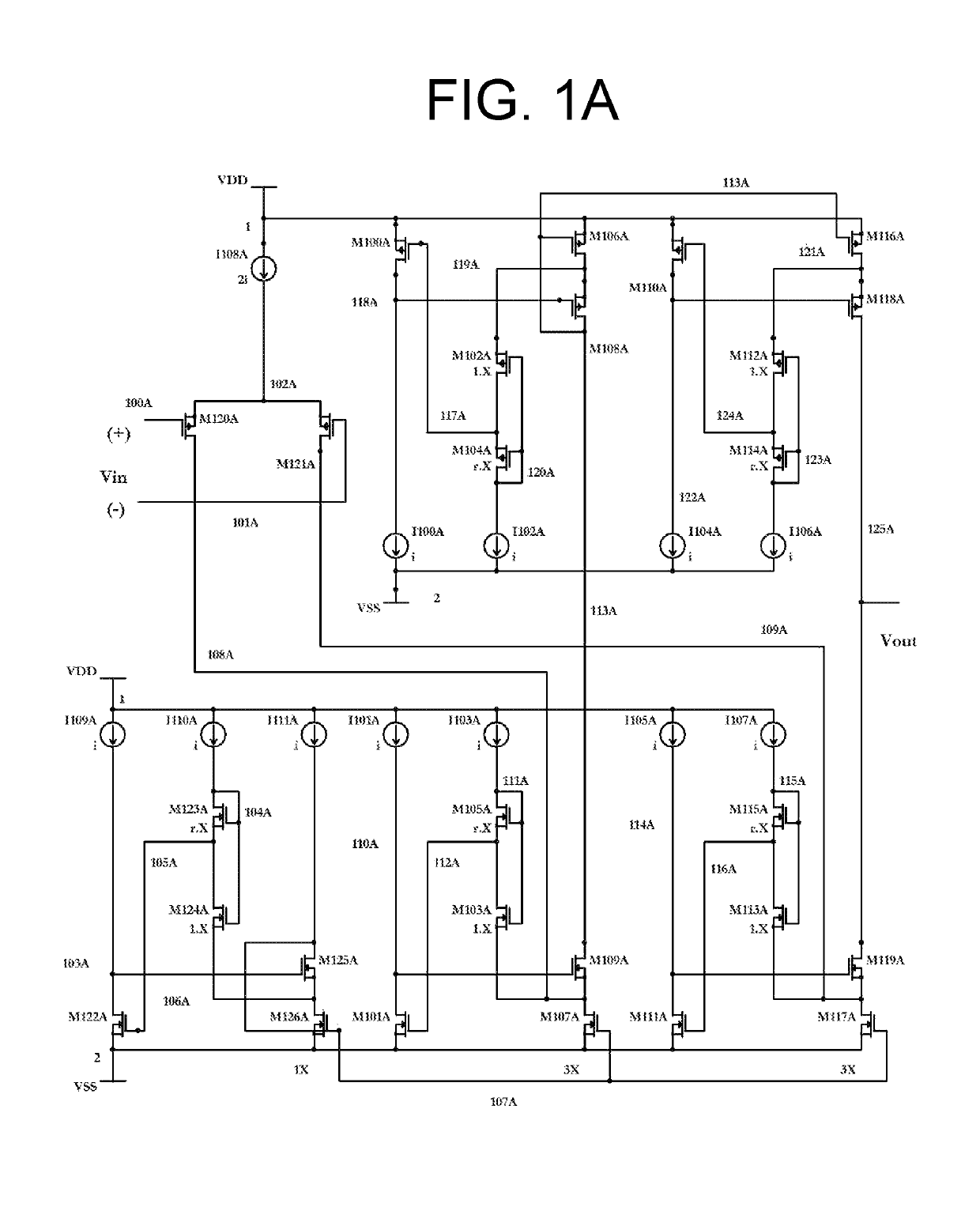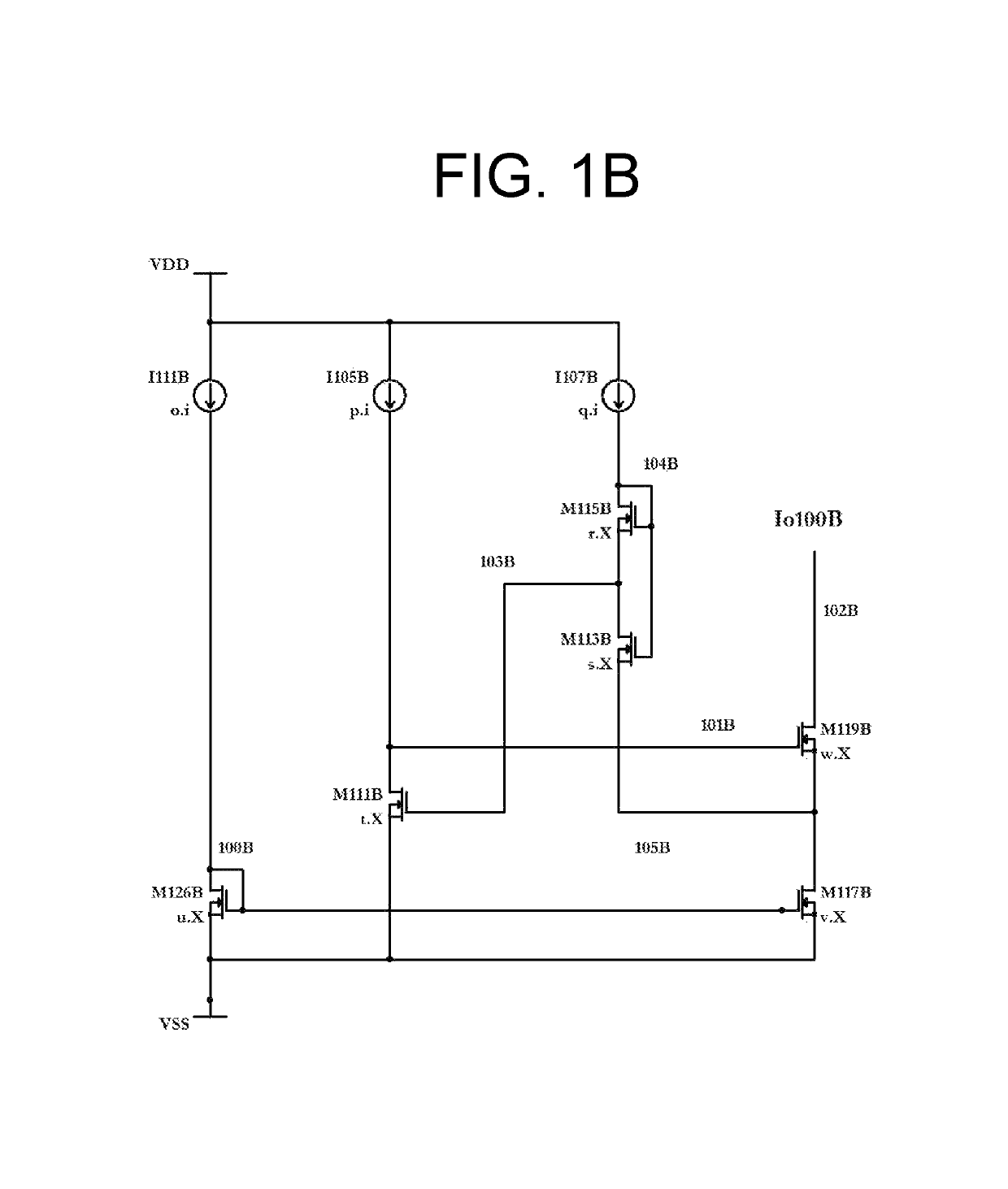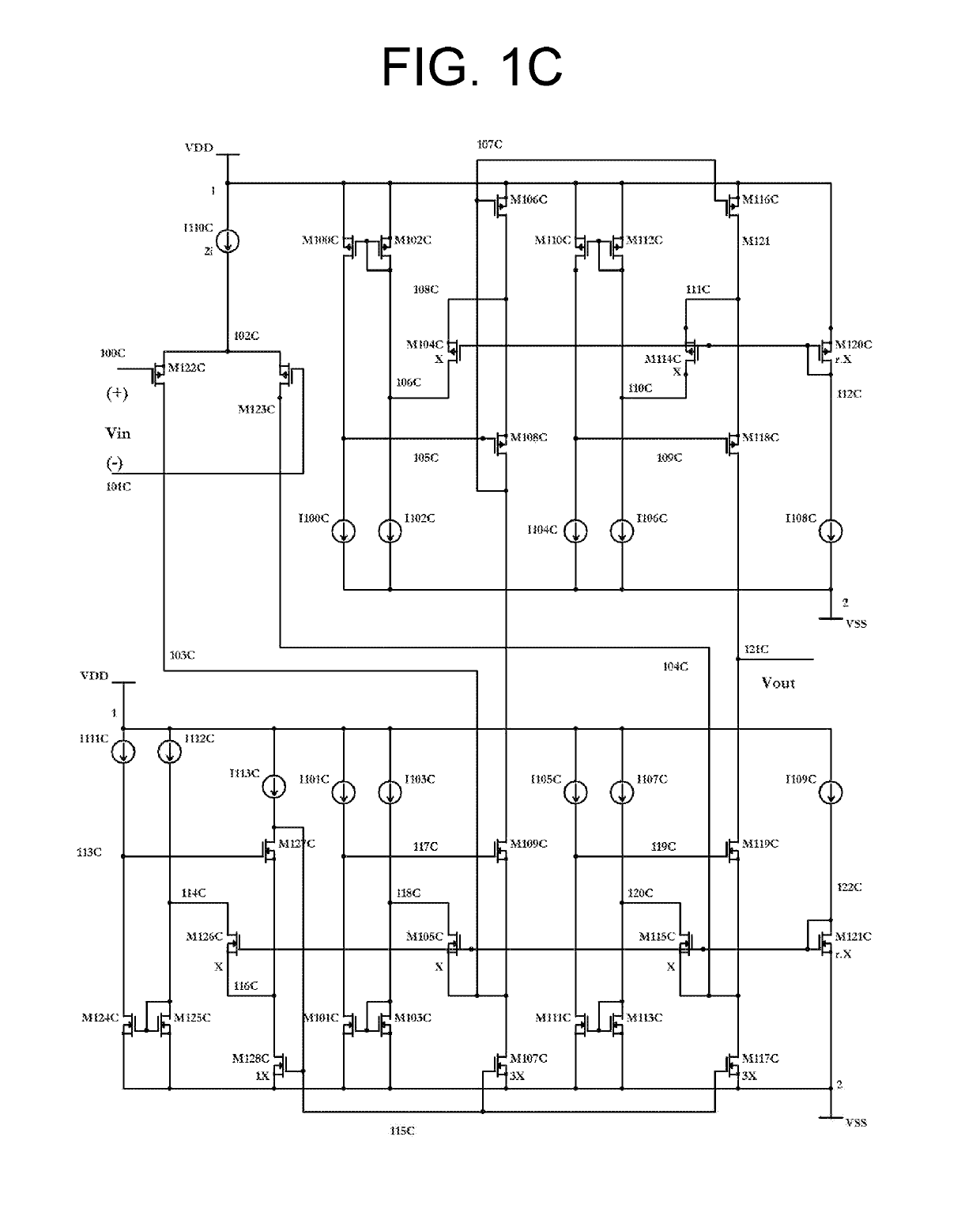Low noise amplifier running fast at ultra low currents
a low-noise amplifier and ultra-low current technology, which is applied in the direction of amplifiers with semiconductor devices/discharge tubes, amplifiers with only semiconductor devices, amplifiers, etc., can solve the problem of slow dynamic response of amplifiers, and achieve the effect of reducing the minimum operating power supply, reducing amplifier offset, and reducing amplifier output nois
- Summary
- Abstract
- Description
- Claims
- Application Information
AI Technical Summary
Benefits of technology
Problems solved by technology
Method used
Image
Examples
first embodiment
[0145]SECTION (VII): Detailed Description of First Embodiment of an Amplifier of FIG. 2A Utilizing the First Floating Current Source (FCS200A)
[0146]FIG. 2A is a schematic circuit diagram of the embodiment illustrating an amplifier utilizing the first FCS (FCS200A) shown in BLOCK: FCS200A at the left bottom side of FIG. 2A. The embodiment discloses FCS200A, which emulates the benefits of a FCS in the amplifier current mirror network, enables the amplifier to operate at low VDD≥˜VGS+2VDS, improves matching of upper and lower currents independent of the common mode voltage swings.
[0147]The amplifier of FIG. 2A is a conventional folded cascode transconductance amplifier (FCTA) that utilizes FCS200A. As indicated in prior sections, broadly speaking, a FCTA is composed of a CSA that converts the input differential voltage to differential currents which are then fed onto a differential input and differential output CGA that is fast. In a FCTA, the differential current outputs of CGA are th...
second embodiment
[0158]SECTION (VIII): Detailed Description of Second Embodiment of an Amplifier of FIG. 2B Utilizing the Second Floating Current Source (FCS200B)
[0159]FIG. 2B is a schematic circuit diagram of the embodiment illustrating an amplifier utilizing the second FCS, which is depicted in BLOCK: FCS200B at the left bottom side of FIG. 2B. Similar to the first FCS discussed in the previous sections, the disclosed FCS200B, emulating the function of a floating current mirror in the amplifier's current mirror network, here that enables the amplifier to operate at low VDD≥˜VGS+2VDS, improves speed, and improve accuracy by making the current matching more independent of common mode voltage swings. Refer to the description provided regarding the FCTA of FIG. 2A in the previous section, which is similar to the amplifier herein FIG. 2B that utilizes FCS200B. The FCS200B illustrated in BLOCK: FCS200B (at the left bottom side of FIG. 2B) which also utilizes two cascode current sources, PMOSFETs (M200B ...
third embodiment
[0171]SECTION (IX): Detailed Description of Third Embodiment of an Amplifier of FIG. 2C Utilizing the Third Floating Current Source (FCS200C)
[0172]FIG. 2C is a schematic circuit diagram of the embodiment illustrating an amplifier utilizing the third FCS, which is depicted in BLOCK: FCS200C at the left bottom side of FIG. 2C. Similar to the FCSs discussed in previous sections, the disclosed FCS200B emulates the function of floating current source in the amplifier's current mirror network, here and enables the amplifier to operate at low VDD≥˜VGS+2VDS, and improve accuracy by making current matching more independent of common mode swings.
[0173]As just noted, from a high level functional perspective, the embodiment of FCS200C here is similar to that of FCS200A and FCS200C disclosed in the previous sections. The embodiment of the FCS200C is illustrated in BLOCK: FCS200B (at the left bottom side of FIG. 2C) which also utilizes two cascode current sources, PMOSFETs (M200C and M202C) and N...
PUM
 Login to View More
Login to View More Abstract
Description
Claims
Application Information
 Login to View More
Login to View More - R&D
- Intellectual Property
- Life Sciences
- Materials
- Tech Scout
- Unparalleled Data Quality
- Higher Quality Content
- 60% Fewer Hallucinations
Browse by: Latest US Patents, China's latest patents, Technical Efficacy Thesaurus, Application Domain, Technology Topic, Popular Technical Reports.
© 2025 PatSnap. All rights reserved.Legal|Privacy policy|Modern Slavery Act Transparency Statement|Sitemap|About US| Contact US: help@patsnap.com



